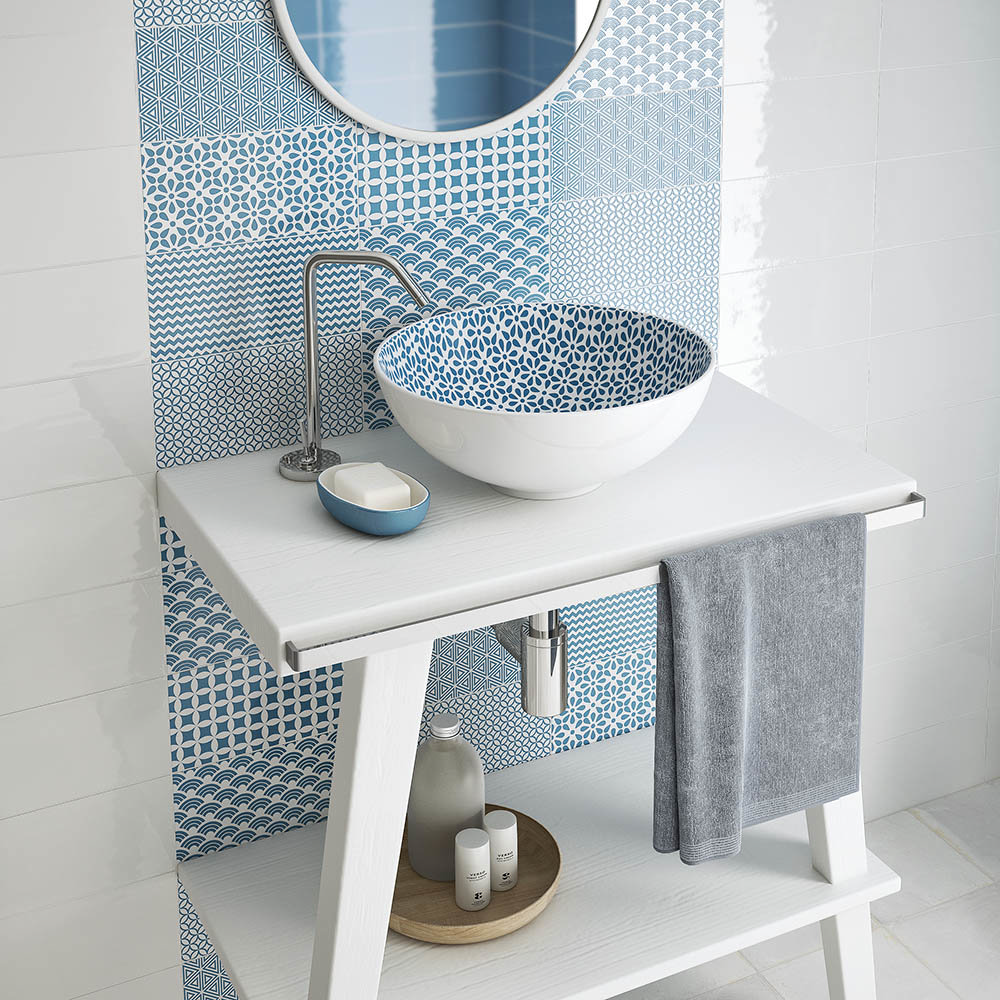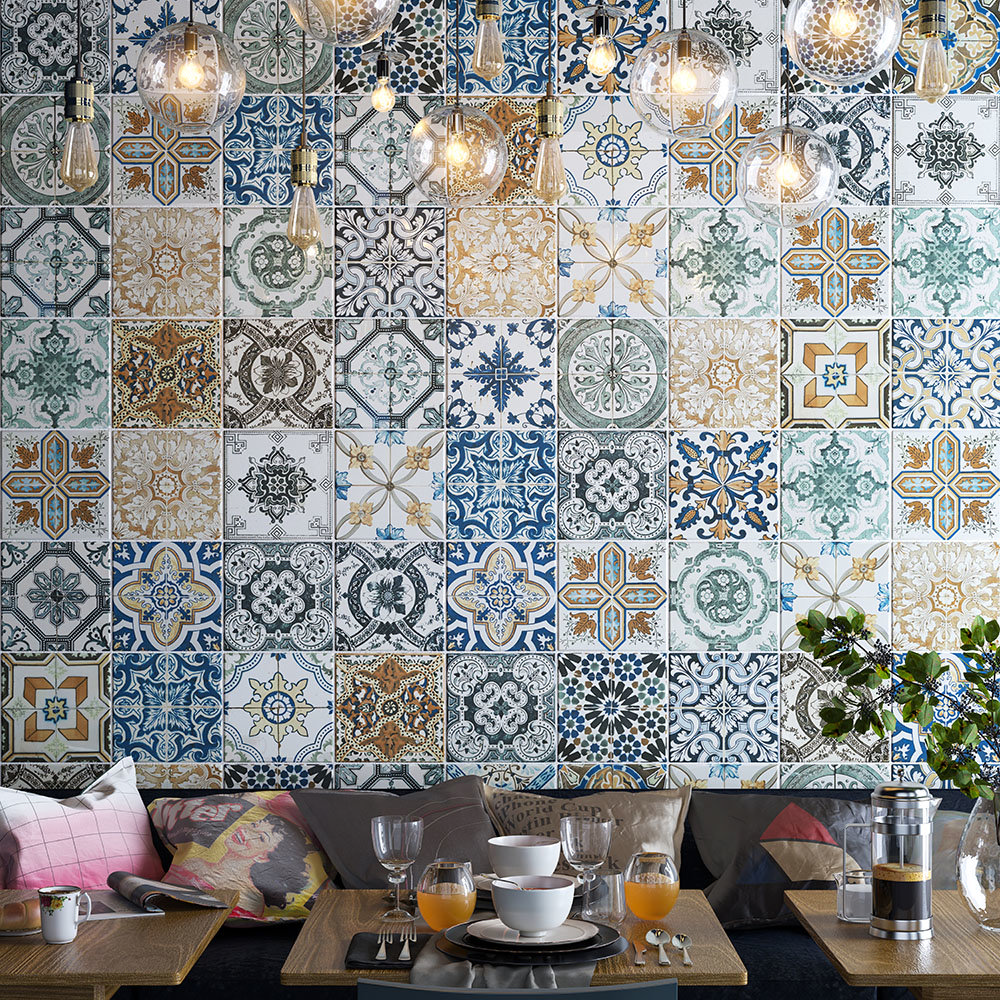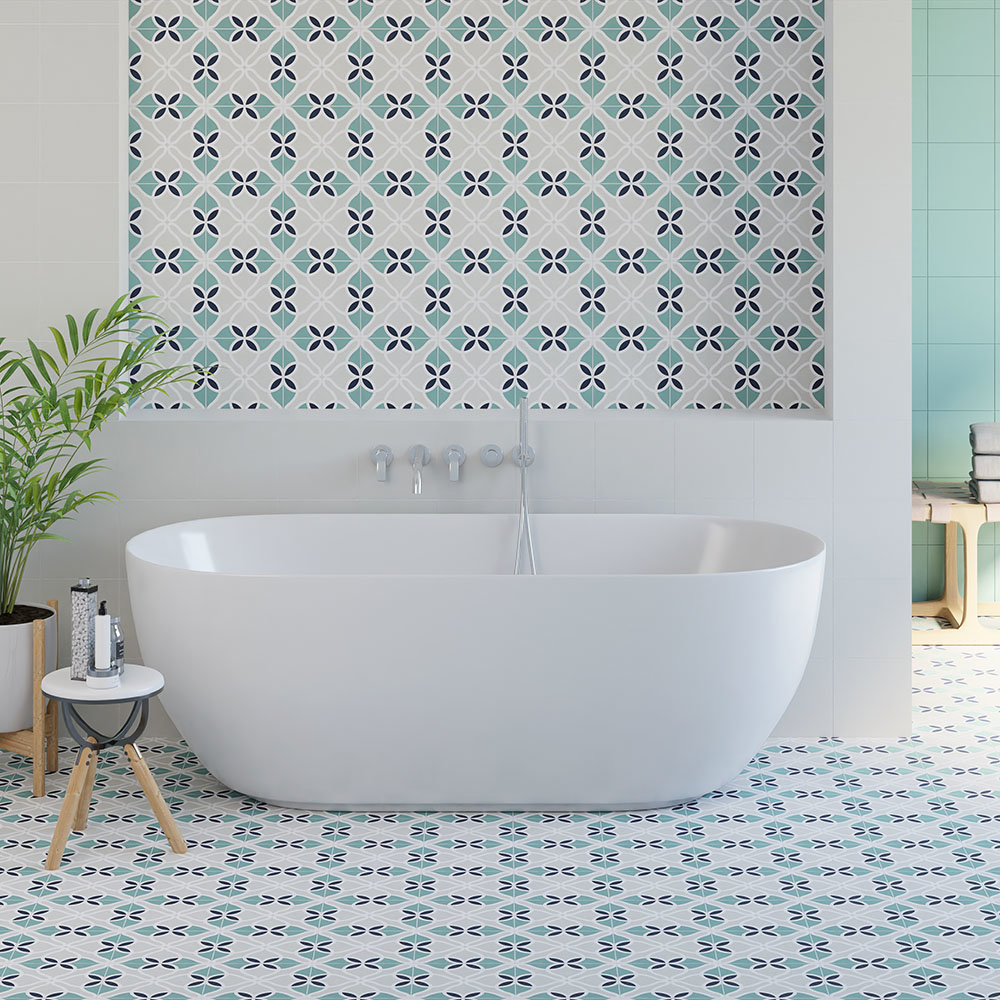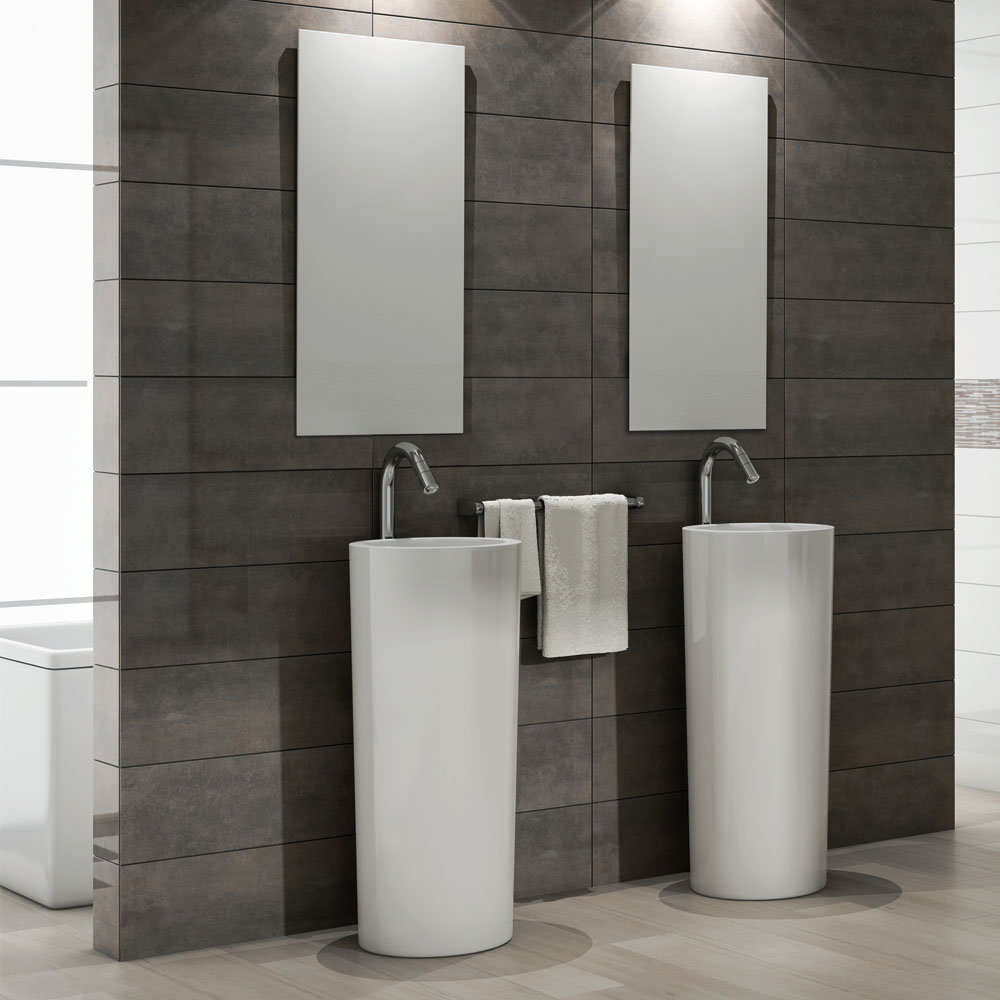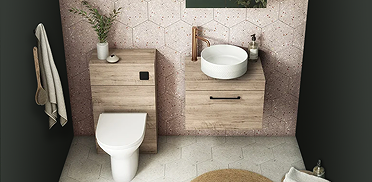EXTRA 10% OFF TILES WITH CODE: TILE10
*Free delivery on orders over £499
Tile Designs From Around The World
Tile Designs From Around The World
Wherever you are in the world, you'll find amazing tiles in an array of beautiful designs, colours and shapes. We take a look at different tile designs from the countries which have helped sculpt the varied range of tiles we have today.

European Tile Designs
● Spanish Tiles
● Italian Tiles
● Scandinavian Tiles
● Portuguese Tiles
● Dutch Tiles
● Victorian Tiles
● French Tiles
Asian Tile Designs
● Turkish Tiles
● Indian Tiles
● Persian Tiles
● Chinese Tiles
● Japanese Tiles
● Islamic Tiles
● Indian Tiles
African Tile Designs
● Moroccan Tiles
● Tunisian Tiles
Americas Tile Designs
● Mexican Tiles
● Brazilian Slate
● Subway Tiles
Tiles are by far one of the best ways to create a wow factor in your home. Whether you’re tiling your floor, walls or both you’ll soon be inundated with designs, colours, shapes and sizes to choose from.
Join us on our tile cruise as we take a look at tile designs from around the world and inspire you with beautiful styles and colours which you can introduce into your home.
A brief history of tiles
The earliest known use of tiles as we know them dates back to 4,000 BC in Egypt. Simple clay and mud tiles were typically used thousands of years before that time as roof coverings, but as the years, or should I say millennia, passed by materials, colours, uses, designs and manufacturing processes evolved which brings us to our modern day tiles.
Tiles became popular around the world quite quickly although their use was limited to palaces, monuments and the homes of only the very wealthy individuals.
Throughout the ages countries like China, Iran and India soon became leaders in the art of tile making too.
In Europe, tiles were popular in the medieval times where encaustic tiles, also known as patterned tiles, were used frequently; unlike surface painted tiles, the pattern would run throughout the tile and avoid the problem of wearing away over time. The Victorian era saw an influx in the use of tiles, mainly encaustic, and by this time, tiles were much more affordable appearing in homes and public buildings including schools and libraries. Tiles could now be made by machine and were mass produced and commonly made with patterned designs.
Modern day tiles
Today, tiles are seen to be not only stylish decoration, but helpful coverings to improve hygiene. They’re able to resist the effects of water, they’re extremely hard-wearing; lasting for years, and they’re perfect for keeping clean. But tile designs vary hugely as designers take their inspiration from the ages gone by and adapt them with a contemporary twist.
Let’s take a look at the many different tiles that you can find from around the world and how their design and style have been influenced by social, economical, political and geographical effects.
Europe
Spanish Tiles
After the Umayyad conquest of Hispania in 711, Muslims introduced new methods of tile manufacturing to Spain. It made Spain one of the first European countries to utilise this new manufacturing process and enabled the Spanish to create even better tiles. This has made Spanish tiles one of the most popular designs in modern times.
These colourful Spanish tile designs come in a variety of mosaic and beautifully decorated styles which have been refined over a thousand years; making them extremely durable and perfect for tiling floors, but they’re perfectly suited for wall decoration too.
Expect beautifully coloured patterns and intricate designs.
Italian Tiles
Italian tiles are regarded as one of the best in the world. Made in Italy is a term branded around fashion, but with ceramics this important phrase signifies the history of ceramic tiles from the late Roman Empire.
The Romans may not have been the first to use tiles, however, their style and manufacturing was a thing to be desired. Italian tile designs are some of the most striking of all European countries.
Scandinavian Tiles
The Scandi living trend has uprooted some stunning Scandinavian tile designs. Scandi chic and the renowned quality of Scandi products have enticed followers of this fashion to seek out tiles in Scandinavian designs.
Scandi simplicity is prevalent within this range of tile; as to are the curved lines, warm tones and wood effect finishes.
Portuguese Tiles
Portuguese tiles are often referred to as Azulejo tiles. These tin-glazed ceramic tiles take a Spanish/Portuguese style and date back to the 13th century. Azulejo translates as ‘small polished stone’ in Arabic; which came about during the Moorish invasion.
Around the time of their popularity in Portuguese culture, blue and white tones were common in Azulejos designs along with yellows and greens. Throughout Portugal, Azulejos tile designs can be found everywhere decorating the walls of buildings across the country.
Expect geometric shapes and neutral tones although patterns and imagery are also known in Portuguese tiles design.
Dutch Tiles
Tiles became popular in Holland during the 1600’s - 1800’s. The best-known potters were from the Dutch town of Delft where the iconic blue and white pottery emerged from.
The potters in Holland had previously excelled in the manufacture of tin-glazed tiles, a process which soon spread to Britain before the the rise in popularity of Delft Earthenware. Delft was one of the most popular tile designs of its time and rivalled Italian and Spanish traditions.
Expect that iconic blue and white colour with a mixture of patterned tiles and tiles featuring imagery.
Victorian Tiles
In medieval times, England had started to revel in the delights of geometric patterns and Victorian tiles were something that boasted these patterns more than anywhere else. They appeared inside grand palaces and monasteries alike but lost their appeal after the Suppression of the Monasteries.
These geometric tile designs were once almost lost forever until an excavation dig during the early 1800’s uncovered a medieval site and the revival of Victorian tiles emerged. Britain were pioneers in the production of mass produced tiles throughout the 19th century.
Expect Victorian Chequered designs, geometric patterns, white and black colours and traditional designs with UK tiles.
French Tiles
Paris was the first city to exhibit cement encaustic tiles which had been made using a hydraulic press. Whilst some people state that France was the first place to use hydraulic presses to create these tiles, also known as hydraulic tiles, it is cited by other credible sources that Catalan-based tile makers Garret and Rivet were in fact the first to use this manufacturing process. Either way, French tiles have been hugely successful due to their striking designs and hard-wearing build.
Expect terracotta and earthy colours with hexagonal shapes. Other French tile designs will have similar styles as Spanish tiles including colourful mosaic tiles.
Asia
Turkish Tiles
Turkish ceramics is one of the oldest in the world and has influenced many of today's modern designs and manufacturing methods. Around the 13th century, tiles were used widely to decorate important buildings such as palaces, mosques and even tombs.
Throughout the Ottoman Empire, Iznik tiles, made in the Turkish city of Iznik, were used inside mosques to help resonate sound during prayers. Popular colours were turquoise, cobalt blue, black and eggplant violet. Glazed and unglazed brick tiles were used frequently, although other types of tile design were square, rectangular and hexagonal shapes.
Triangular tiles were used as well on some buildings and Turkey, which is positioned between Europe and Asia, was also home to many monochrome tile designs. Another technique in which the Turkish used was mosaic tiles. Most designs were geometric, however flowery designs and writing, also known as calligraphy, appeared on many mosaic tile designs.

Expect colourful tiles with turquoise hues, cobalt blue and eggplant violet for traditional Turkish tiles design.
Mosaic tiles have proven highly popular although hexagonal tiles and square tiles are favoured too!
Indian Tiles
One of earliest known places on earth to use tiles for decoration was India and Mesopotamia (Iraq). This area of the world is where the majority of tile history lies.
The manufacture of tiles in India has seen thousands of years of refinement and the early artisans of tiles created some beautiful designs to help decorate mosques and luxury buildings, although the tile designs were eventually perfected in Persia.
Expect floral designs and mosaics with bright colours such as blues, turquoise, yellows, reds and greens. The tile design above crosses over both Indian tile designs and Spanish tiles too!
Persian Tiles
As we mentioned earlier, Persia may not be the original birth place of tiles (well as far as we know anyway), but the Persians were the ones who were able to perfect the artistic design and were pivotal in the creation of mosaic tiles.
The Persian artisans also designed tiles with Arabic writing on them known as Kufic inscription which dominated important buildings including places of worship. Persian tile designs are amongst some of the most spectacular in the world.

Expect mosaics and geometric patterns and brightly coloured designs using turquoise, blues and light greens which are frequently contrasted with reds and oranges.
Chinese Tiles
The Chinese have been manufacturing tiles for thousands of years and today they’re widely known for their roof tiles. One of the most famous tiled monuments in the world is the the Porcelain Tower of Nanjing.
Unfortunately, this tower had been almost completely destroyed, but some of it remains and the rest was reconstructed and opened to the public in 2015. It had a mixture of tiles with varying colours including green, yellow, brown and white as well as images on tiles including animals and flowers. The Chinese also helped influence the blue and white Delft Dutch tile designs we see in Holland.
Expect blue and white, brown and white colour combinations and imagery on Chinese tiles. Oriental tiles, another way of saying Chinese tiles, tend to have a pale colouring so aim for pastel colours such as beige, green or blue where possible.
Japanese Tiles
For centuries, Japan’s ceramics and porcelain production was considered to be amongst the finest quality in the world. In the latter parts of the 19th century, Japan created its very own Art Nouveau movement in Arts and Crafts.
This movement opened up a whole world of vibrant colours including reds, turquoise, pinks and green. The introduction of majolica tile designs to Japan created a spark in more colourful tiles being produced.
Expect artistic designs with vibrant colours and decorative patterns. There are also dark colours like black and grey which are finished with gloss or matt.
Islamic Tiles
Although Islam isn’t a country, Muslims in the regions of Sri Lanka, Iran and surrounding areas were widely known for the creation of Geometric tile designs.
This stylish design was inspired by the Romans and Greeks, as well as the Sasanian Empire. Islamic tiles as they’re commonly referred to are beautifully decorated with bright colours and come in a variety of designs including geometric and mosaic tiles.
Expect mosaics with bright, bold colours using geometric patterns and floral designs.
Africa
Moroccan Tiles
Morocco is widely known for their zellige tiles. These terracotta Moroccan tiles are usually designed on a square shape tile with pale, pastel-like colours. Zellige tile designs can also come in bright colours and have the appearance of mosaic, although not all are.
This north African style eventually made its way to Spain where it gradually became popular throughout the whole of Europe.
Expect bright colours and pastel hues with a large range of terracotta tiles. Moroccan tiles also take on geometric patterns as well as bold floral designs.
Tunisian Tiles
The geological location of Tunisia left it wide open to invasions and throughout the centuries it has seen a broad range of cultural introductions from the east and west. One of the biggest influences on Tunisian tile designs is that of Islam. Although early tiles can be seen in Tunisia as far back as the 9th century, Tunisian ceramics really boomed through the arrival of Islam and they soon mastered the art of glazing and beautiful decorations. These striking patterns were made up of floral and geometric designs and heavily influenced with bright colours including turquoise, blue and green.

Expect floral designs and geometric patterns. Vibrant colours such as blue, turquoise, green and orange are popular with Tunisian tiles design.
American
Mexican Tiles
Mexico has some of the most beautiful tile designs on the planet with some of the most famous artisans. Talavera tiles dominate central cities in Mexico and create a colourful, decorative covering for walls and floors. The creativity of the original artisans can provide you with a real insight into the cultural heritage of Mexico.
Authentic Talavera tiles are made with clay from the city of Puebla, and several nearby communities. This high-quality clay has been used in the manufacture of Talavera pottery for centuries. Mexican tiles are usually concave which gives them a truly unique look and their decoration is heavily influenced by Spanish Maiolica pottery introduced in the colonial period.
Expect concave high quality tiles with bold, vibrant colours including blues, yellows, greens and reds.
Brazilian Slate
Brazilian tiles, also known as Brazilian slate, became hugely popular in the country after the inception of Portuguese and Dutch influence. Some of the most beautiful uses of Brazilan slate are found in the north and northeastern parts of Brazil.
In the 1900’s Brazilian tiles took another boom during the neocolonial movement and involved geometric shapes and bold colourful designs. Brazilian tile designs are rarely used throughout the world which makes them ideal for those looking for something a bit different.
Expect geometric patterns and stunning vibrant colours such as blues and turquoise.
Subway Tiles
In New York, subway walls are traditionally furnished with white rectangular tiles commonly referred to as subway tiles. Subway tiles, also known in the UK as metro tiles, have recently become one of the most popular styles of tiles in kitchens and bathrooms across Europe. In Britain, metro tiles are quickly becoming a really popular look in both traditional and modern settings. With this new popular tile design has come an array of colours including pink, purple, red, black, blue, turquoise and yellow, however traditional white metro tiles still hold their own against this influx in competitive tones. The popularity of subway tiles is so huge that you can now find mini metro tiles in a range of colours too!
Expect bold colours and a traditional rectangular shape with a bevelled edge on subway tiles.
We really hope you've enjoyed your journey around the world of tiles and feel like you have found some of our facts and information useful in your quest for choosing tiles to decorate your home.

Alan
Alan is one of our bathroom bloggers here at Victorian Plumbing. He likes writing helpful articles on bathroom trends and ideas. As well as writing his specialist buying guides, Alan can be found here sharing his expert 'how to' step-by-step DIY guides. When he isn't posting on the blog, he likes surfing the web for top bathroom tips and useful customer advice.




